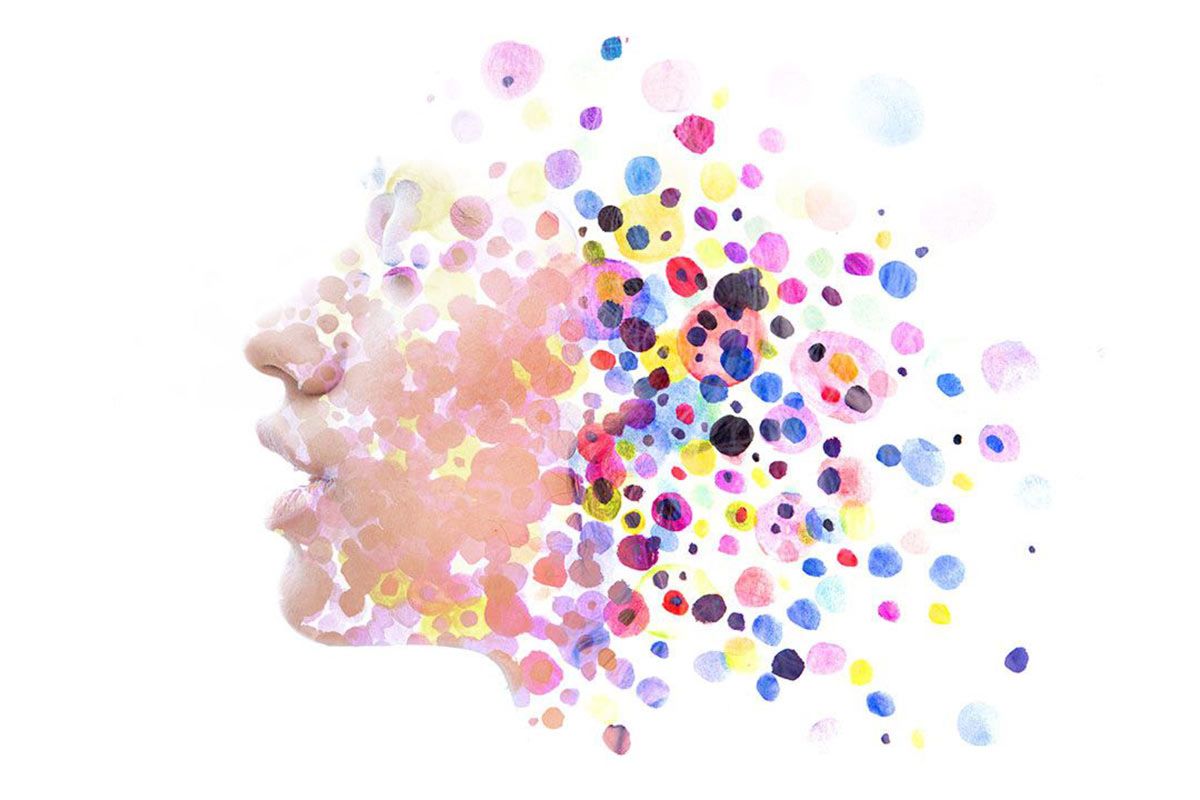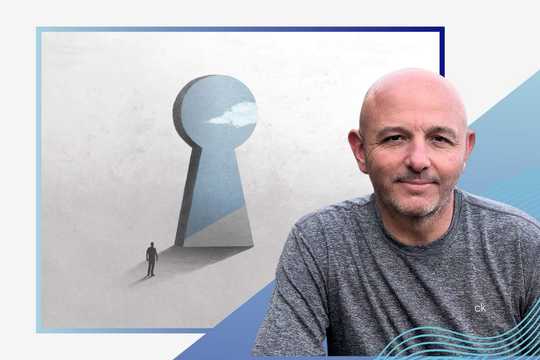Psychedelic therapy holds a lot of promise, which medicine is right for you? Dr. Raquel Bennett describes her journey to find ketamine assisted psychotherapy and launch the first ketamine specific conference. She talks about different methods and approaches used in ketamine therapy.
After struggling for over a decade with severe depression, Raquel Bennett turned to psychedelics after no available treatment made substantial improvement. Working with a psychiatrist and an underground psychedelic shaman over a two-year period, her psychotherapy was facilitated first with MDMA, then psilocybin, then LSD.
As therapeutic tools, these psychedelics provided little relief; two of them made her worse.
“I felt I failed at psychedelic therapy.”
“It was catastrophic,” she said. “At that point, I was really discouraged and I felt that I had failed conventional treatments and that I had essentially failed psychedelic treatment, and I was ready to kill myself. I was really at the edge of that rope there.”
What Bennett didn’t know at the time was that she had an misdiagnosed mood disorder. For people with serotonergic disorders, including major depressive disorder, bipolar disorder, schizophrenia, and other mood disorders, some psychedelics can have a dangerous impact. Too much serotonin can be destabilizing. “Any of the medicines that are active in the serotonin pathway will really screw somebody up if they have an organic problem with serotonin regulation.”
“It’s very common actually that people with organic mood disorders do very poorly with MDMA,” Bennett said. She notes that people on the bipolar spectrum can have manic episodes during the MDMA experience, followed by an extremely severe depression. For the same group, psilocybin can induce a psychiatric emergency or persistent psychosis that requires hospitalization. “There’s been a terrible job of adequately educating people that you cannot give serotonergic agents to people who might be on the bipolar spectrum because you could hurt them.”
A Spiritual Exploration
Bennett’s shamanic teachers continued working with her in an ongoing psychotherapeutic and spiritual context. Two years into psychedelic work, her teachers suggested using ketamine to aid a spiritual exploration. The intention for the experience was to explore her intense suffering: why was it in her life, and what was its purpose or value?
“It was life-saving,” Bennett said. Under the drug’s influence, the visions began. “My experience was that God came, and God put a giant golden key into my right ear and turned the key and turned my brain on. It was like the whole system got rebooted. I realized that I was awake and that I was alive and that my brain actually did know how to work. It had just been asleep for a long time. I was very excited.” Paralyzed in that moment by the medicine, she wasn’t able to express her immediate excitement to her teachers, and then she continued on a psychedelic journey that, nearly twenty years later, still resonates for her with profound beauty and expansiveness.
From Isolation to Deep Connection with Ketamine Therapy
Poetic and symbolic, a common thread throughout her experience is moving from isolation to a deep connection. After feeling God’s key turn on her brain, she found herself on an orange surfboard on the edge of the outer Universe. Next, she identified herself as a single raindrop, her own autonomous being. Then her drop reunited with other drops into a river she knew innately as a “river of love.” Her psychedelic ketamine therapy experience helped her to recognize her inherent worth and sense of wellness, she said. “At the core of who I think I am, I am not defective or broken. I was ill, I needed treatment, and there was enough reason to stay alive to pursue more treatment.”
For weeks following, Bennett’s depression remained lifted. This came as a complete surprise to her teacher, her psychiatrist, and other mental health providers she spoke to. No one believed an immediate antidepressant could ever exist.
Awe Creates Curiosity
The effect of Bennett’s ketamine therapy experience, as well as the experience itself, captured her attention: how does this work? Is it reliable and repeatable, or was it a fluke? She sees the medicine impacting her in two ways: chemically and spiritually. While the chemical effect relieved her depression for months, the visions she experienced were the most striking.
“There’s too much emphasis on it as a pharmaceutical agent and not enough attention being paid to its very prominent visionary properties,” she said. “Nothing is more profound for somebody who wants to die or who hates themselves so much that they want to kill themselves than to find themselves being cradled in the arms of God, realizing that everything is connected, that their life is meaningful, that they’re an essential piece of the puzzle for what’s supposed to be happening right now on the planet.”
Ketamine Therapy- Key to Your Brain?
How does it happen in evolution that you come to have a lock in your brain with no key?
Dr. Raquel Bennett
First synthesized in the 1960s, ketamine has commonly been used as a surgical anesthetic and recreationally as a psychedelic. Unlike other psychoactive medicines, ketamine has no natural analogue. For example, the synthetic psychedelic LSD has an analogue to ergine, which exists in morning glory and Hawaiian baby woodrose seeds. Ingesting these seeds triggers receptors in the brain that LSD also triggers. What strikes Bennett deeply is that nothing in the natural world has been found that hits the same pore on the same receptor that ketamine hits, a receptor that controls the perceptions of pain and separateness.
“How is it that you have a receptor that’s activated by this molecule, but for more than 10,000 years there’s been nothing that’s been hitting that receptor?” She asked. “How does it happen in evolution that you come to have a lock in your brain with no key?”
While the neuroscience is interesting to her, it’s not her primary focus. If ketamine therapy allowed her to lose the sense of pain, to see walls between herself and others dissolve, and to gain deep feelings of connection, could that be healing for others? Could it be reliable and repeatable? Her curiosity drove her to pursue graduate study in clinical psychology where she met new walls: discussing ketamine and other psychedelics was forbidden.
“It was professional suicide.”
Dedication to Lifelong Ketamine Therapy Study
When Bennett began graduate study in clinical psychology a few years later, she planned to devote her career to helping people living with mood disorders, including severe and refractory depression, bipolar disorder, and active suicidal ideation. At the end of her seven years of psychoanalytic study and training, the people referred to her were very depressed and suicidal.
“I was totally frustrated by the treatment options that were available for them because they’re too slow,” she said. Talk therapy can take several months for noticeable effects. Psychiatric medicine is another option, but it takes several weeks to reach their optimal levels in the body. Additional variables of dosage and finding the most suitable medication can add more time before noticeable improvements. “It’s not that they don’t work. They do work. They’re just too slow for when people want to kill themselves.”
A decade had passed from her first ketamine experience to the end of her clinical training. She couldn’t forget how impactful the experience was. “I had mentioned to a couple of people during my graduate training that I had had this amazing experience,” she said. “They forbade me from ever mentioning it or openly expressing my interest.” Discussing psychedelics was considered “professional suicide.”
Warnings? What Warnings?
Despite the warnings, in 2012, Bennett began battling with her school to write her dissertation on ketamine. At first, they forbade her from using the word “psychedelic.” She said, “I fought with them for a whole year about this, because they thought that was an inappropriate topic for academic study.”
She prevailed and sought anybody and everybody who would discuss ketamine use outside of the context of anesthesia. In 2013 and 2014, after extensive calls and emails, after thorough Internet research, she interviewed everyone who would talk. How many would speak? “Five. Five clinicians. Five providers on the planet. Not kidding.”
Explosion after Silence
When publishing her dissertation in spring 2014, people regarded ketamine in widely divergent ways. Most known ketamine use was in high doses for psychedelic or transpersonal exploration. Ketamine therapy was still unknown.
“The National Institute of Mental Health had conducted a couple of studies using low-dose ketamine with modest results, so they were advocating for the low-dose infusion. But everybody that I knew was doing high-dose injection,” Dr. Bennett said. After her dissertation publication, Bennett found herself fielding people’s questions about ketamine and being a middleman for relaying various perspectives.
In 2015, Dr. Bennett decided to create a gathering where people working with ketamine could share information: dosing strategies, routes of administration, preparation and integration. She organized a lunch to gather these voices and ideas in one place. But people were anxious about attending: their reputations were on the line, and associating with psychedelics, no matter how legal, still seemed like a very bad idea.
Taboo Research Pushes Boundaries of Ketamine Therapy
“Everybody wanted a confidentiality agreement to make sure that nobody found out that they attended,” Bennett said. “Then, at the last minute, everybody wanted to bring a friend. The reality is that a lot more people were using ketamine for psychedelic exploration than they wanted to admit to.”
The number of people now wanting to attend surpassed what the restaurant could handle for a group lunch. Bennett rented a library space to accommodate the event, which began to snowball from the original handful of invitees. Realizing the potential historic nature of the event—a conversation taking place that may have never occurred before—Bennett hired a videographer to document it.
The video, Bennett says, shows 28 people perspiring heavily from anxiety. But the space had been created. “As soon as there was a gathering where it was okay to talk about this, I think people wanted to find other people with similar interests, in particular people whose interest overlapped with psychiatry, psychotherapy, and psychedelics,” she said. The KRIYA Conference was born. The gathering in 2016, the following year, hosted 53 attendees from around the world. “For 2017 they all wanted to come again, and they all wanted to bring a colleague.” Over 100 people attended the 2017 KRIYA Conference.
Whiplash
2017 was a landmark year for psychedelics. Both the National Institute of Mental Health and the American Psychiatric Association acknowledged the benefits of using low-dose ketamine to treat depression. In August, Time Magazine’s cover story was about ketamine as “the new anti-antidepressant.” Relatedly, that same month, the Food and Drug Administration granted breakthrough therapy designation status to MDMA for the treatment of post-traumatic stress disorder, marking it the first time psychedelic-assisted psychotherapy would be evaluated in Phase 3 trials for possible prescription use.
The following summer Michael Pollan’s book on psychedelic research, How To Change Your Mind, became a #1 New York Times bestseller. In California, a 2018 initiative to decriminalize psilocybin mushrooms failed. Similar ballot initiatives are currently underway in Denver and Oregon.
Also in 2018, over 1,000 people applied to attend KRIYA Conference. Four years earlier, 28 people had been cautious about associating.
“We have intellectual whiplash, because the information is changing so fast. We haven’t had time to adjust to the very rapid change in this field,” Bennett said. She added that, despite all the whiplash, the major institutions remain consistent in their view of the psychedelic side effect of these substances: “They call it psychotomimetic, meaning creating or mimicking psychosis. From their perspective, the psychedelic effect, the visionary and hallucinogenic properties, is to be avoided. You either have to dose under it or you have to medicate it out.”
Pandora’s Toolbox of Ketamine Therapy
In a short period of time, ketamine therapy has become widely accepted. The adoption is not without its risks. While the medicine’s possibilities are known, the range of its potential remains to be explored. What all can it do, and how can we know?
Major institutions recommend low-dose ketamine infusions. With Bennett having seen the therapeutic value of higher-dose treatments, what remains to be explored is the optimal dose. She asked, “What’s a good starting place? How high can you go? Is more better? Is there ever too much? We’re trying to work that out.”
If an optimal dose is found, then other questions emerge. With various methods of administration available and their differing bioavailability, which is best? Then questions of frequency emerge. Bennett asked, “How often should you do this? What does maintenance dosing look like? Is it okay to do this long-term? We don’t know. We don’t have enough long-term patients to be able to answer that question.”
Bennett is quick to clarify that working with ketamine in the psychedelic dose range is not safe or appropriate for many people. For a patient to have a medically and psychologically safe psychedelic experience, careful selection and adequate preparation is crucial. “I don’t think we should be doing this broadly.” Bennett said.
“This is not a try-this-at-home situation.”
Respect the Medicine
As with other psychedelics, ketamine must be used with the deepest respect. “If you use it with respect, then it can be very beautiful and generous. But if you use it without respect, it can be very fickle. I get a call every day of the week from somebody who had a bad experience because they didn’t respect the medicine,” Bennett said.
Due to the nature of the medicine and its risks, Dr. Bennett declined to provide guidelines on dosage and preparation, because she says it requires a nuanced understanding of diagnosis and integrative treatment. Doing so would be incomplete and, if acted upon, could be damaging. Some common side effects are not life-threatening, like hypertension, nausea, headaches, tremors, and an emergence reaction, a fear caused by anesthesia. Other side effects can be deadly: seizures, respiratory distress, paralysis. “When those things come up, people go south really quickly and need immediate medical intervention. You really just don’t have time to call 911 and wait for an ambulance to come,” Bennett said, having witnessed two medical emergencies in her career and had a emergency medical team ready to intervene.
Respect Mitigates Risk
Much risk comes from how ketamine therapy is administered. The methods with the highest bioavailability are through intravenous or intramuscular injection. With oral ingestion of other psychedelics like psilocybin or MDMA, the body can protect itself by rejecting what it doesn’t want. Needles bypass the body’s defenses.
“As the provider or as the sitter, you really are holding that person’s life in your hands for that period of time. As the provider, you need to be equipped for that level of responsibility, psychologically and medically,” Bennett said.
Where MDMA and LSD enjoyed experimentation by underground lay therapists and patients doing the work on their own, ketamine’s risks don’t allow for the same exploration. This limitation requires collaboration by a range of medical professionals in order to see the medicine’s potential.
The Three Paradigms for Ketamine Therapy
For researchers and clinicians working with ketamine, Bennett sees them functioning from one of three paradigms: biological, psychological, or psychedelic.
Biological Paradigm
In the biological paradigm, the focus is the biochemical effect. The patient shows up for treatment, receives the medicine, and the medicine does its work. Bennett believes it’s a useful paradigm for much of medicine, but making the patient passive is “a terrible idea.” She also notes that much of the current research operates from this paradigm.
“Where you’re emphasizing the biochemical properties and its effect on receptors, you may not be paying enough attention to people’s mental experience,” Bennett said.
Psychological Paradigm
With the psychological paradigm, the emphasis rests on ongoing psychotherapy. Ketamine is introduced as an assistant in the process, allowing the patient to access and process difficult material. This is the same principle in most psychedelic-assisted therapy research, where a psychotherapeutic dialogue causes the patient’s improvement.
“What’s interesting about this is that, in both of these paradigms, getting psychedelic is problematic. They’re trying to dose under or avoid psychedelic experience because you don’t want the patient too far out,” Bennett said.
Psychedelic Paradigm
In the psychedelic paradigm, the visionary, mystical experience is what’s valued. “The visions are basically perceived as a gift from God, and you have heavy preparation to help the patient to offer up their own body as a vessel to receive the visions,” Bennett said. Meaning is extracted or constructed from the visions and experience and turned into actions after the session. Essentially, visions instruct the patient how to move themselves toward wellness.
Finally, while these three paradigms can overlap, not all clinicians recognize or understand the value of operating in other paradigms. In addition, therapeutic ketamine has become lucrative, which is privileging each paradigm independently. This may stunt the advanced exploration of the medicine’s potential.
“A whole bunch of anesthesiologists have opened clinics on the side that provide intravenous ketamine infusion to depressed people. They’ve been arguing that the only safe way to use ketamine is intravenous. In other words, at their clinics,” Bennett said. “There’s a turf war currently between the anesthesiologists and the psychiatrists over this question about route. Economics are a huge factor.”
Matching Patients with the Right Therapy
Despite the conflicts, the main question remains that Bennett knew innately from her first experience in the early 2000s: match the therapy to the patient. “I’m totally opposed to a one-size-fits-all approach to ketamine treatment. That’s a terrible idea, Different people benefit from different things.” she said.
Any psychedelic therapy must begin with a differential diagnosis. An experienced mental health professional needs to thoroughly evaluate the patient and understand what causes the person to suffer. A treatment plan appropriate to the diagnosis comes next.
There are concerns about the broad use or legalization of psychedelics. “They’re great tools, and I’m totally in support of them being more available,” Bennett said. “But, if you are not an experienced mental health professional, how are you going to know if the patient is presenting with unipolar depression or bipolar depression or a substance use disorder or severe trauma?”
What Helps a Patient the Most?
In developing any treatment plan, a crucial question to ask is what will help the patient the most? “What I’m trying to do is educate patients that they have a variety of options, that there’s a whole spectrum of ketamine services that are available. And I’m trying to educate clinicians on how to know the difference about when to do what. That in fact is the purpose of KRIYA Conference is for us to compare notes about this as we try to sort this out. That’s my job: to figure out in greater detail.”
With the recent explosion of interest and therapeutic research, it’s important to note there is no panacea—only a range of tools available we must try to understand. Above all, ketamine therapy being one of them.
Education for providers is critical to a safe rollout for Ketamine. Psychedelic Support offers ketamine assisted therapy training online in partnership with Polaris Insight Center.







